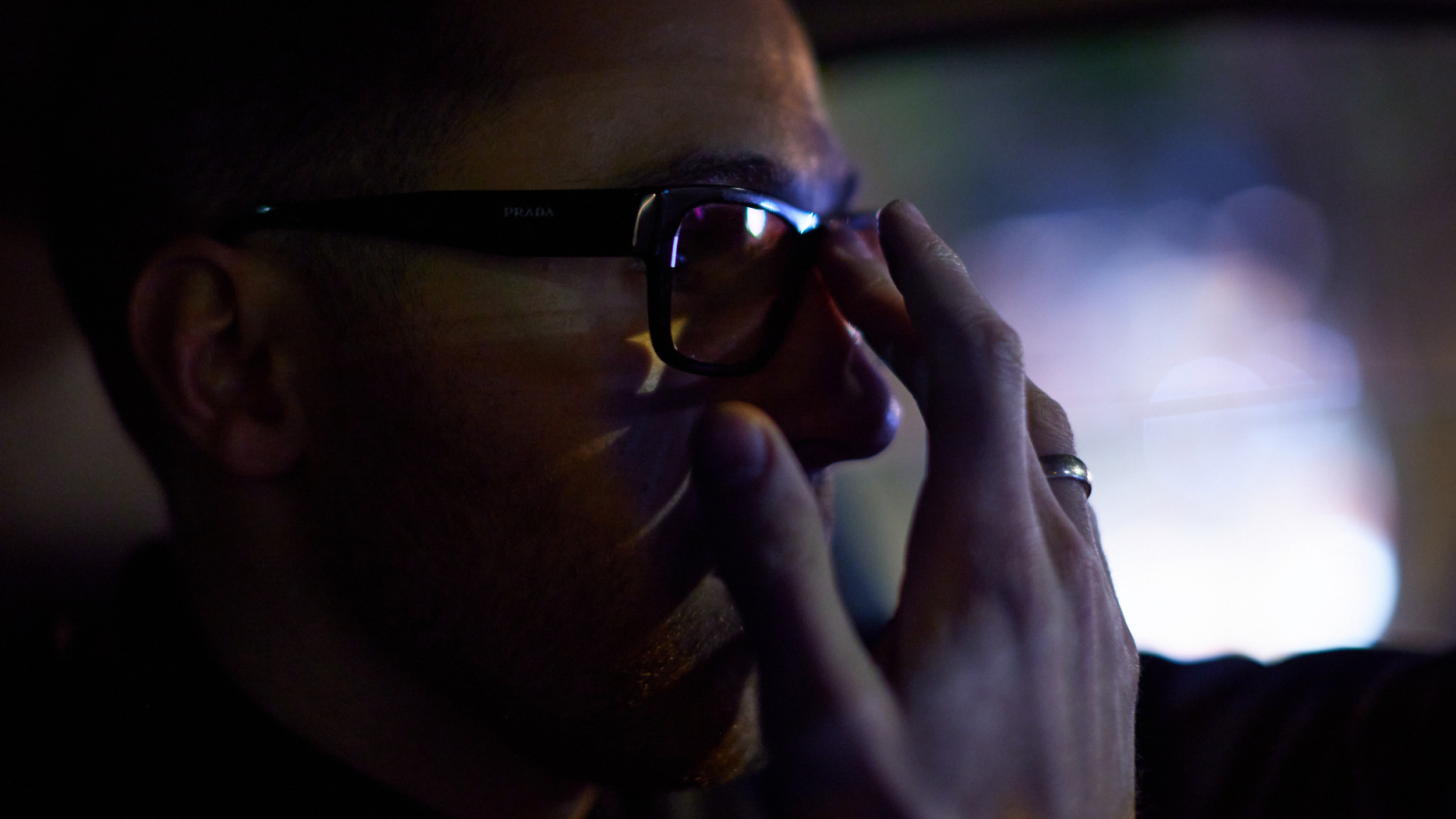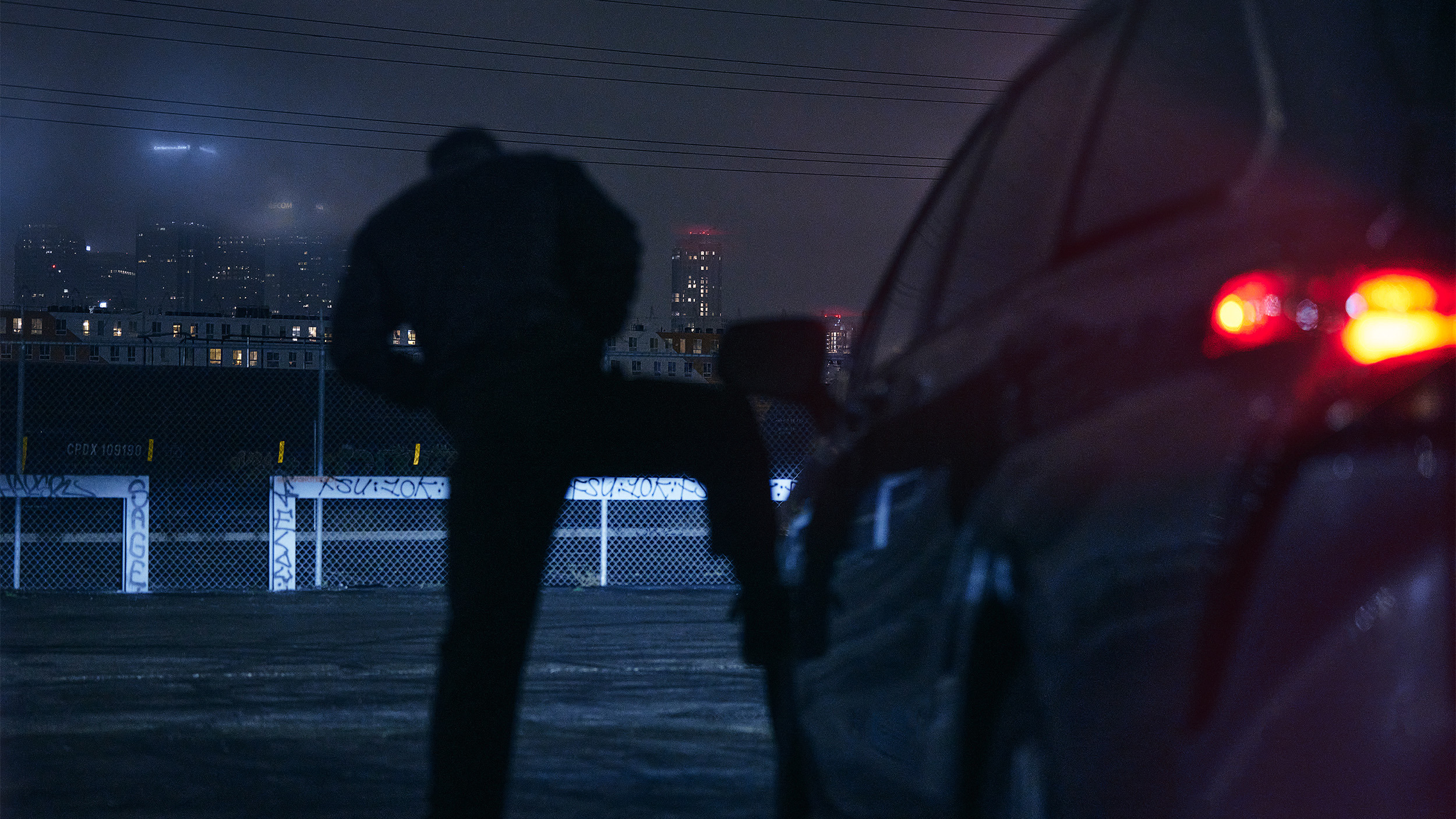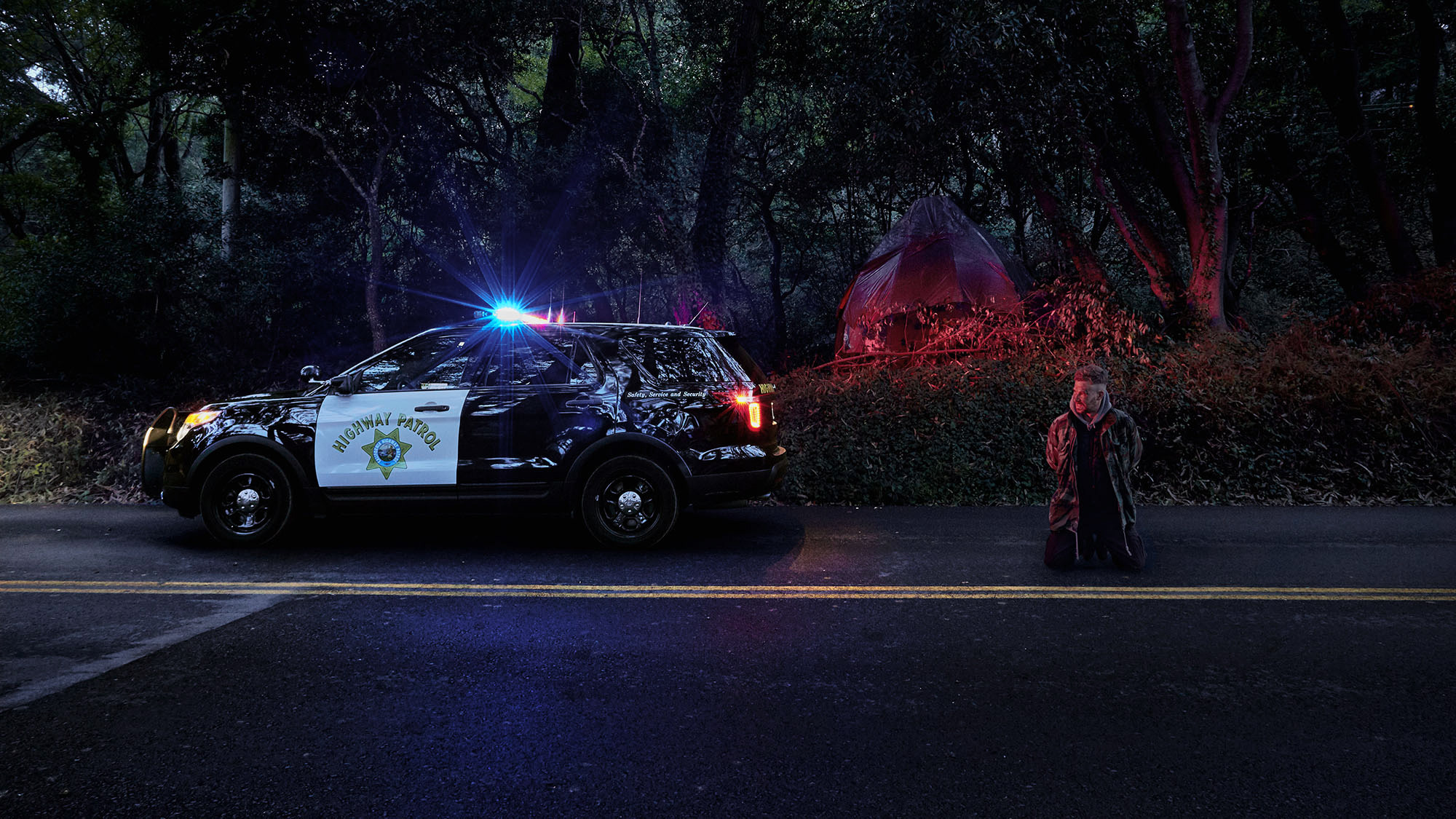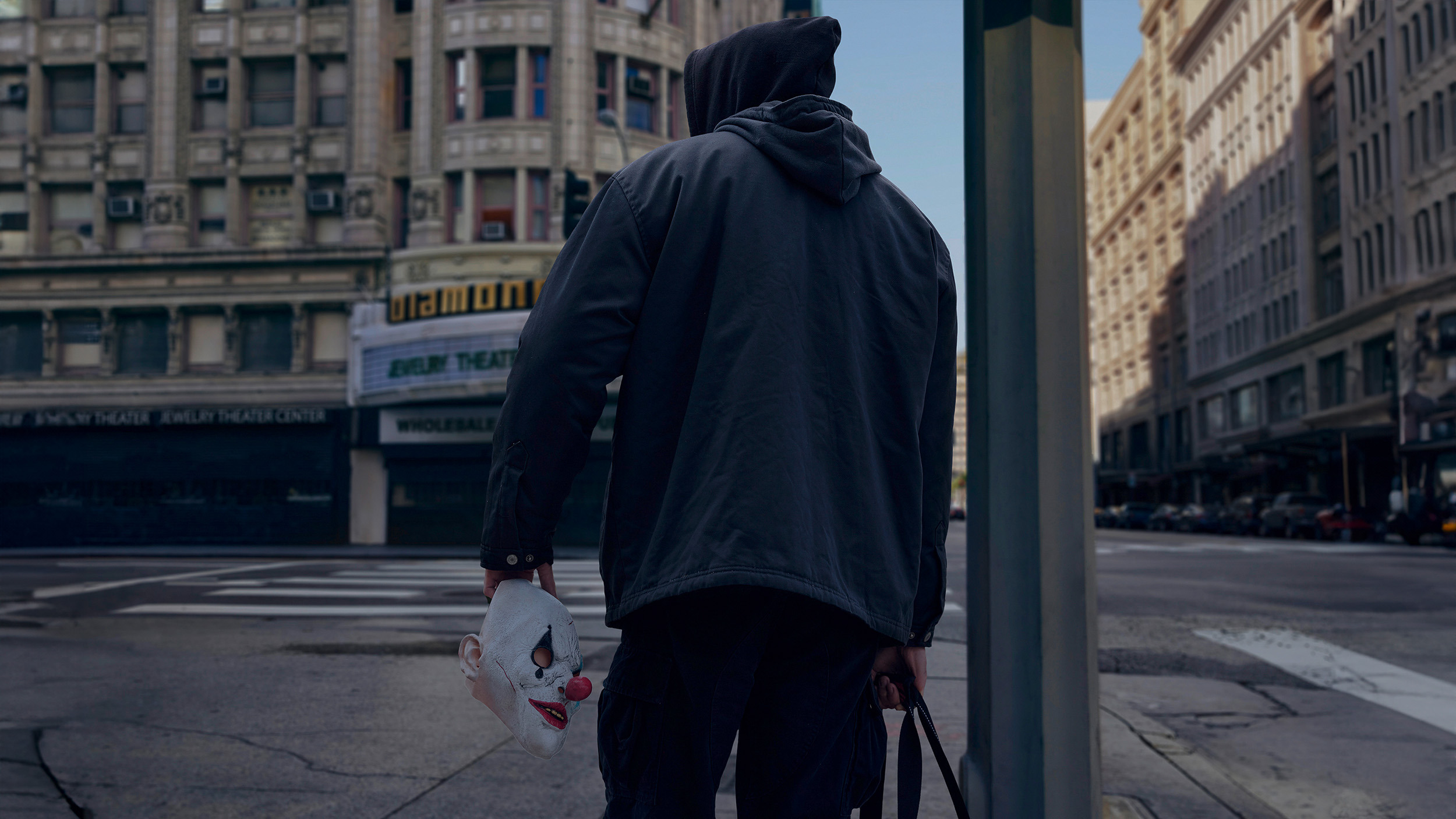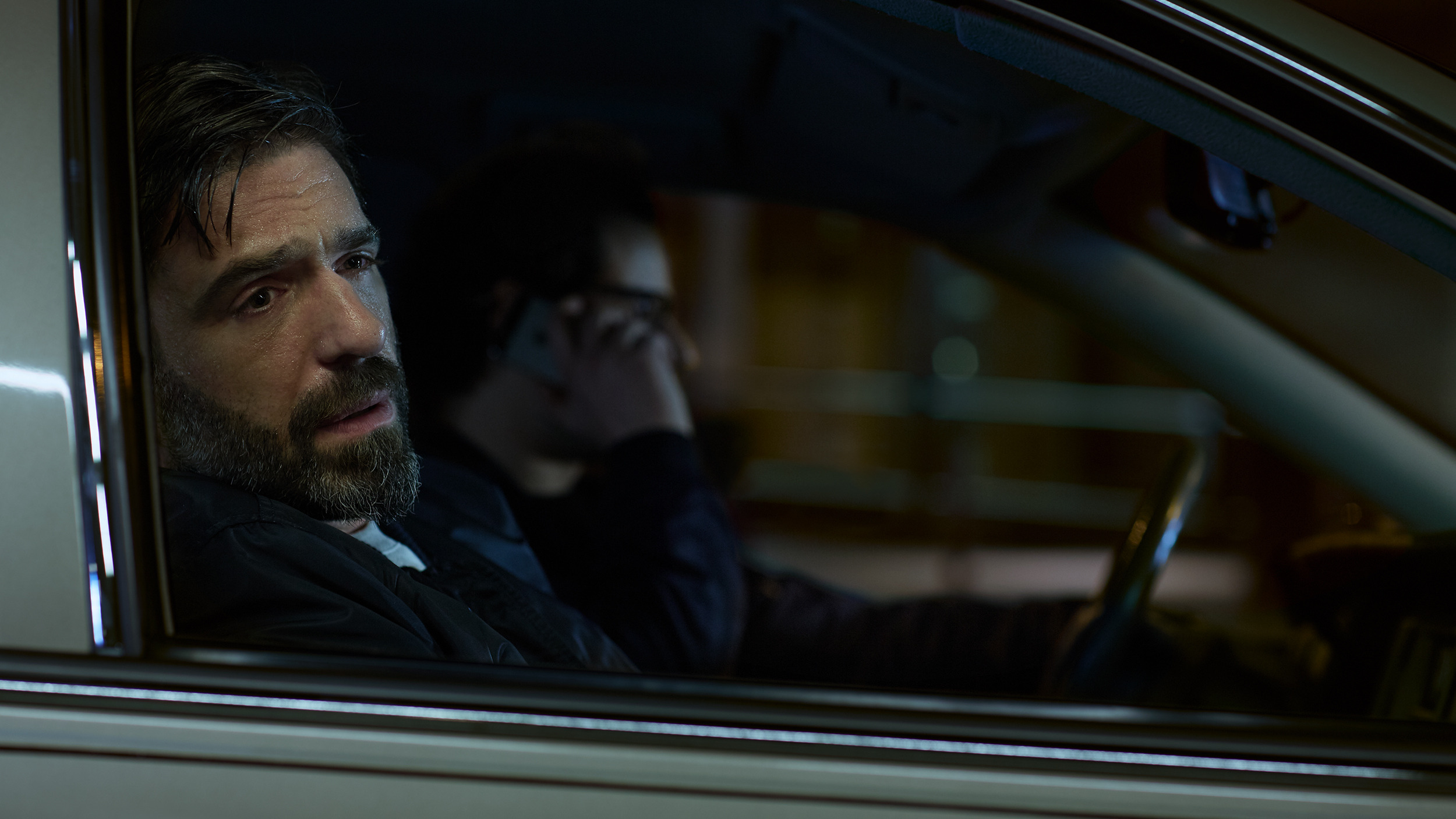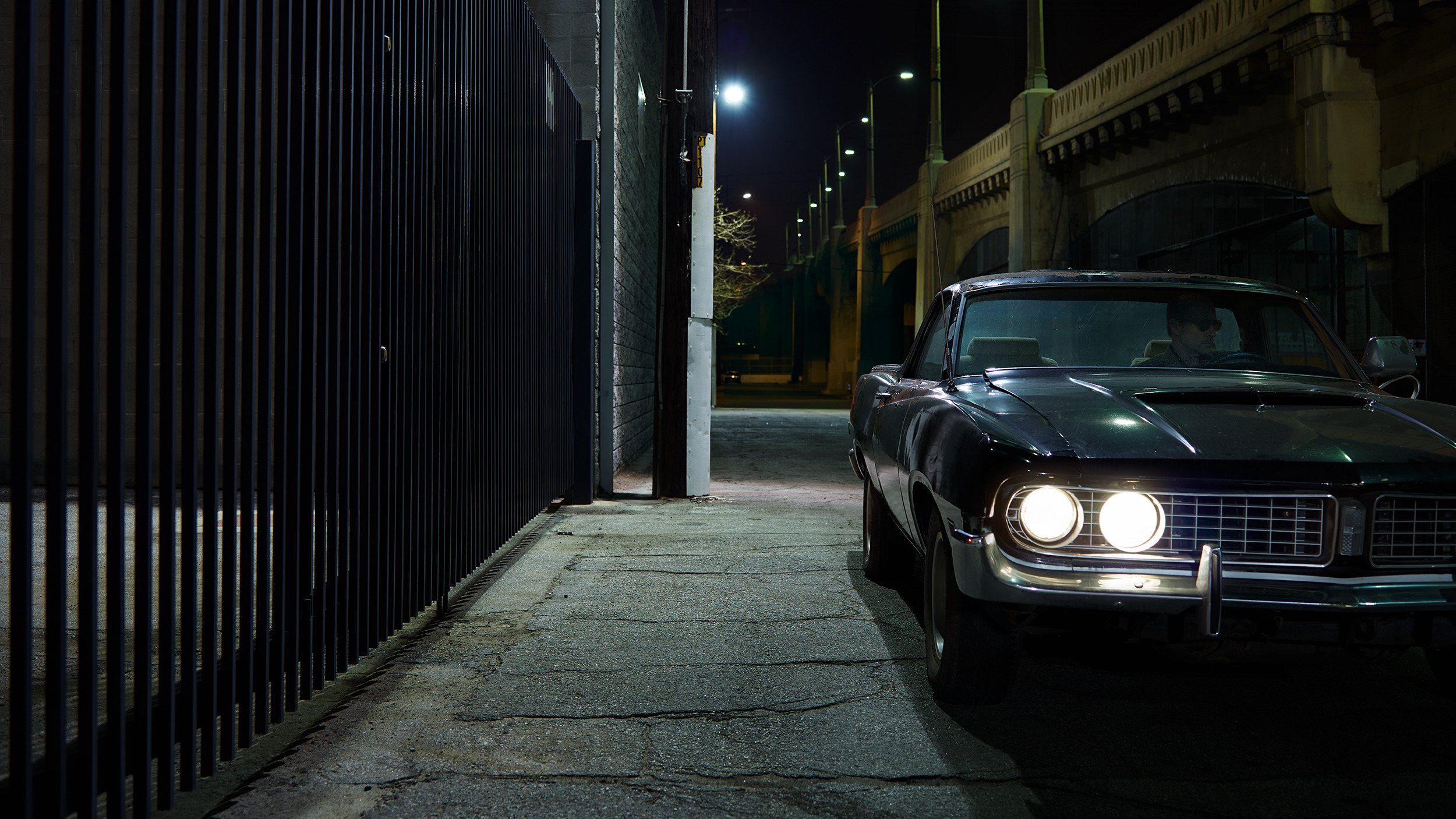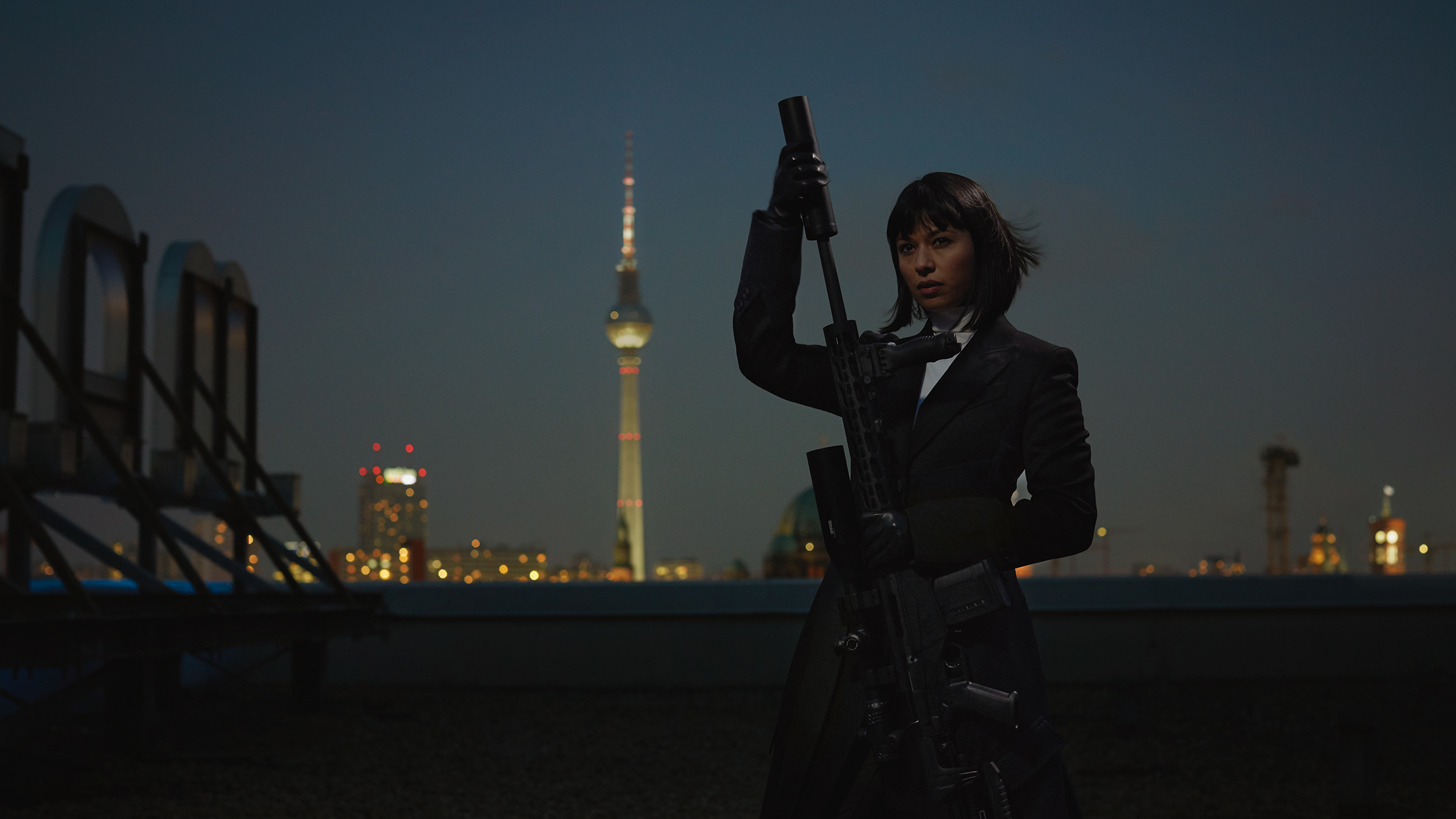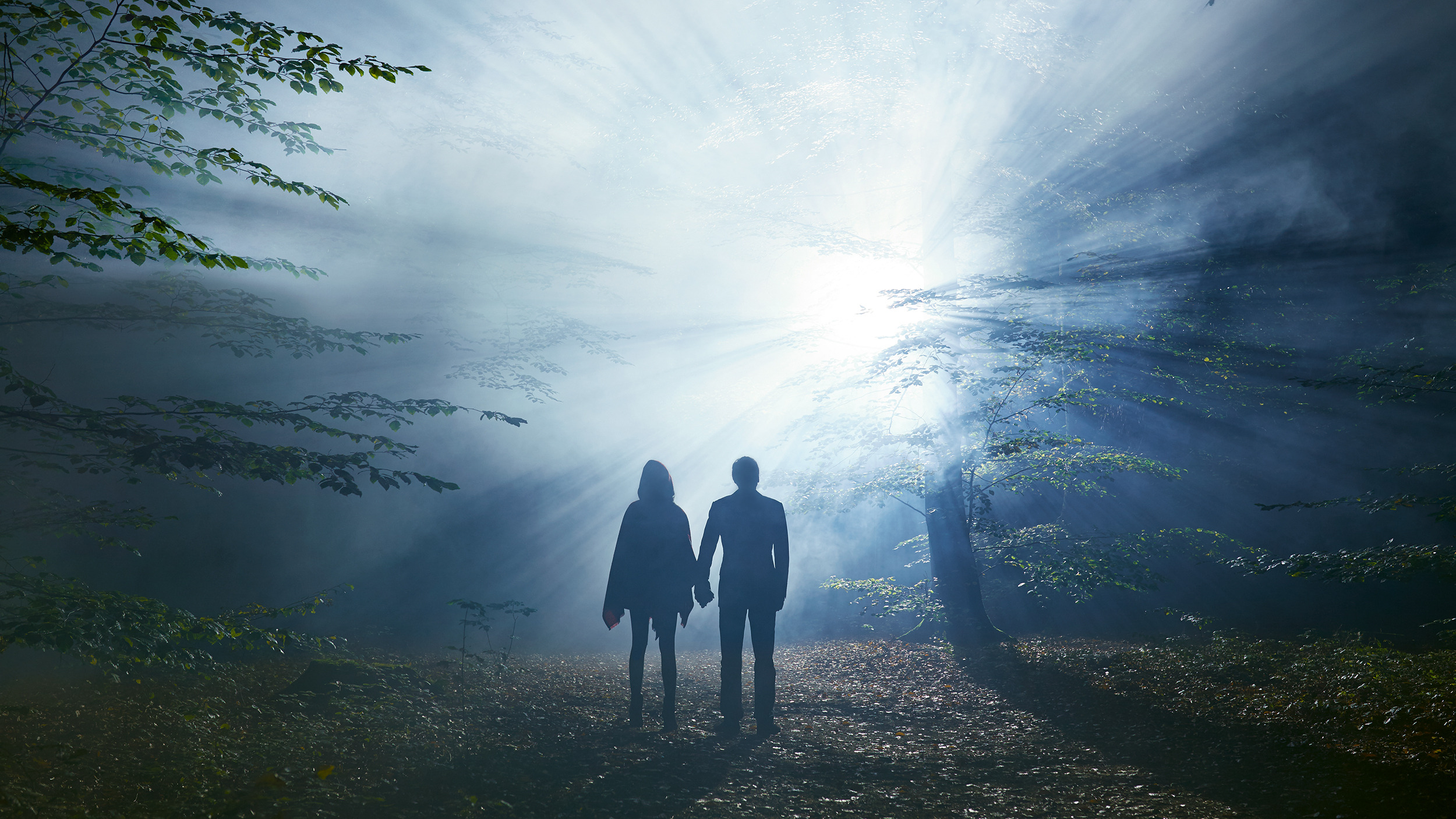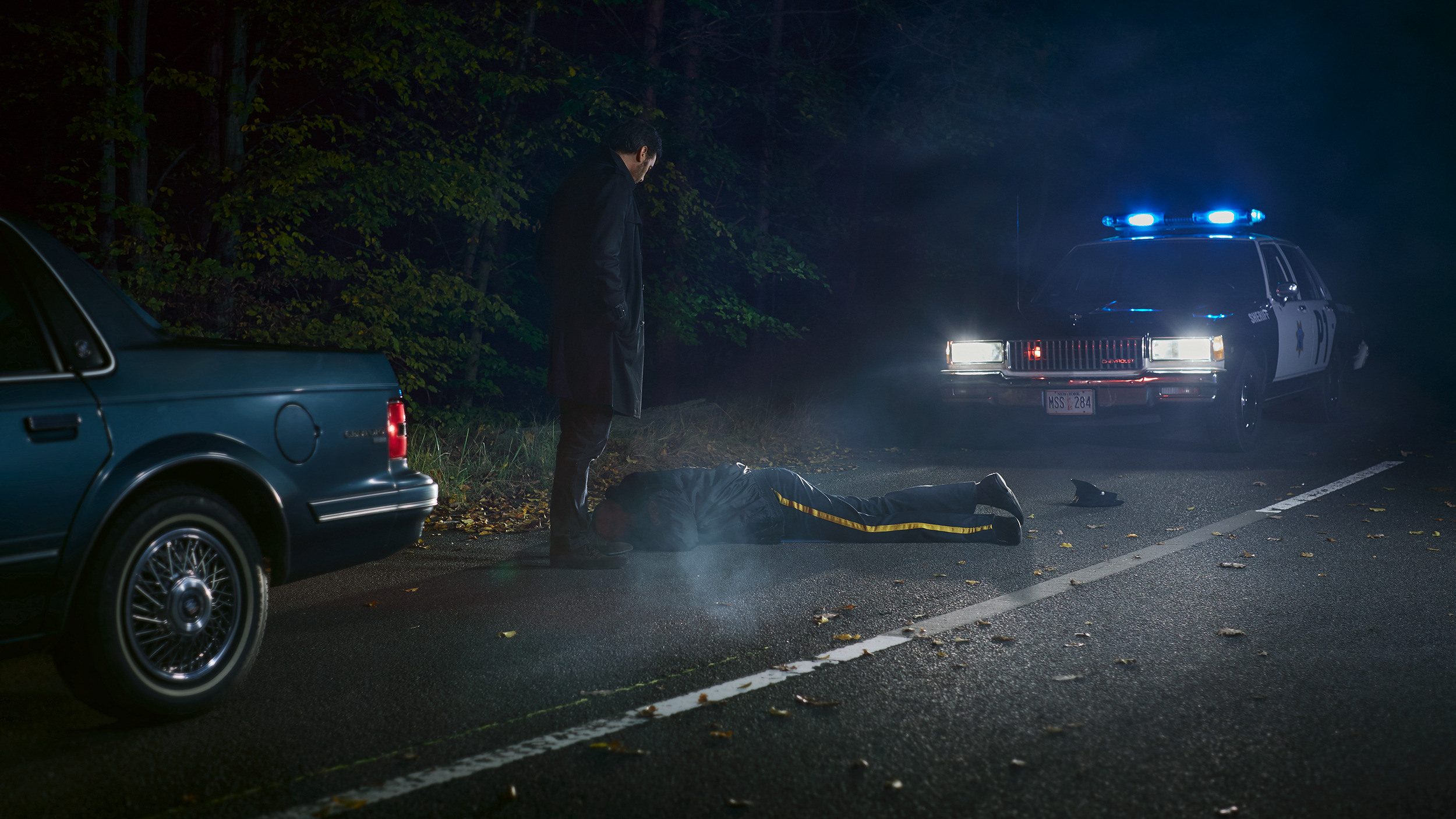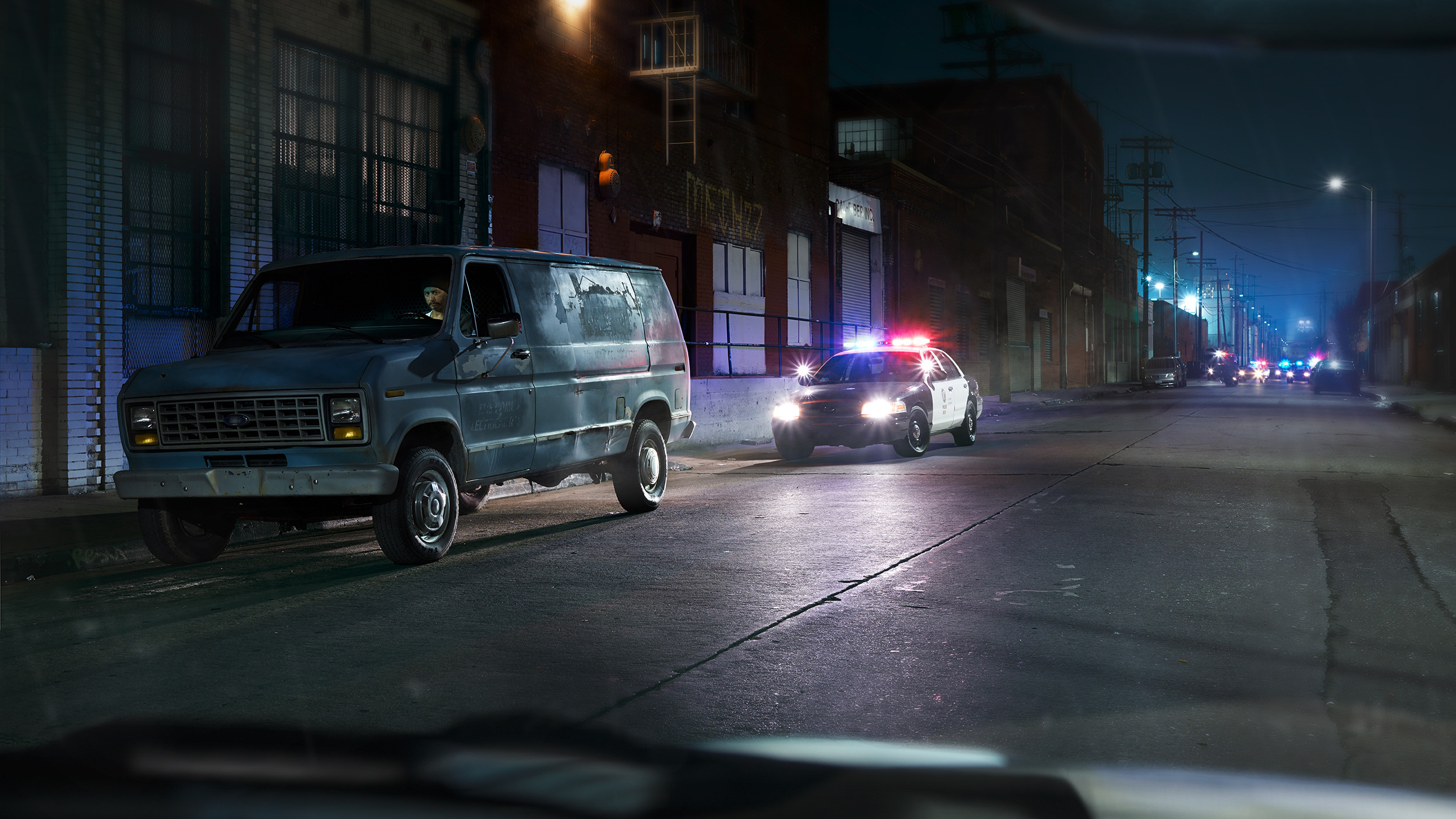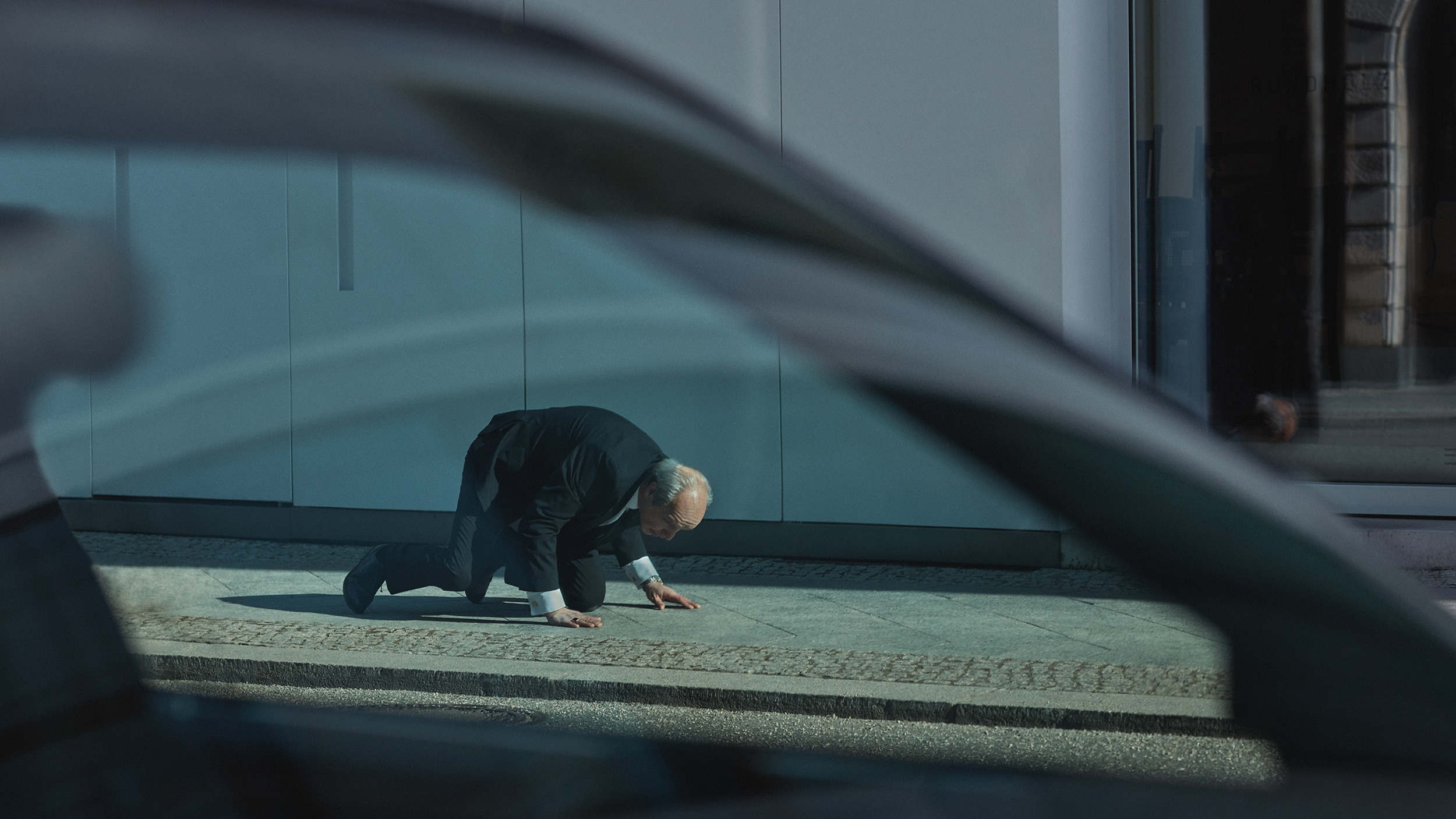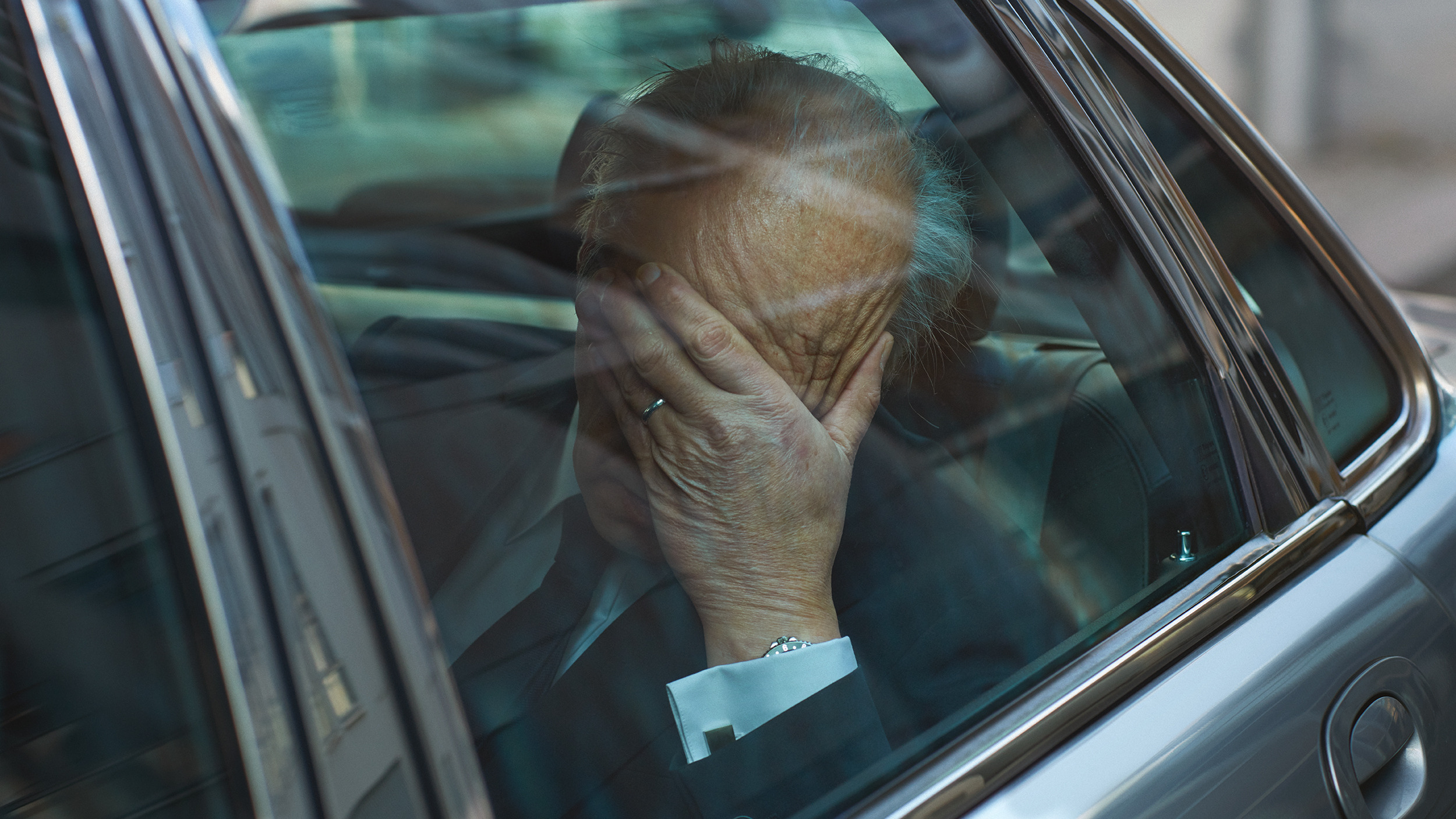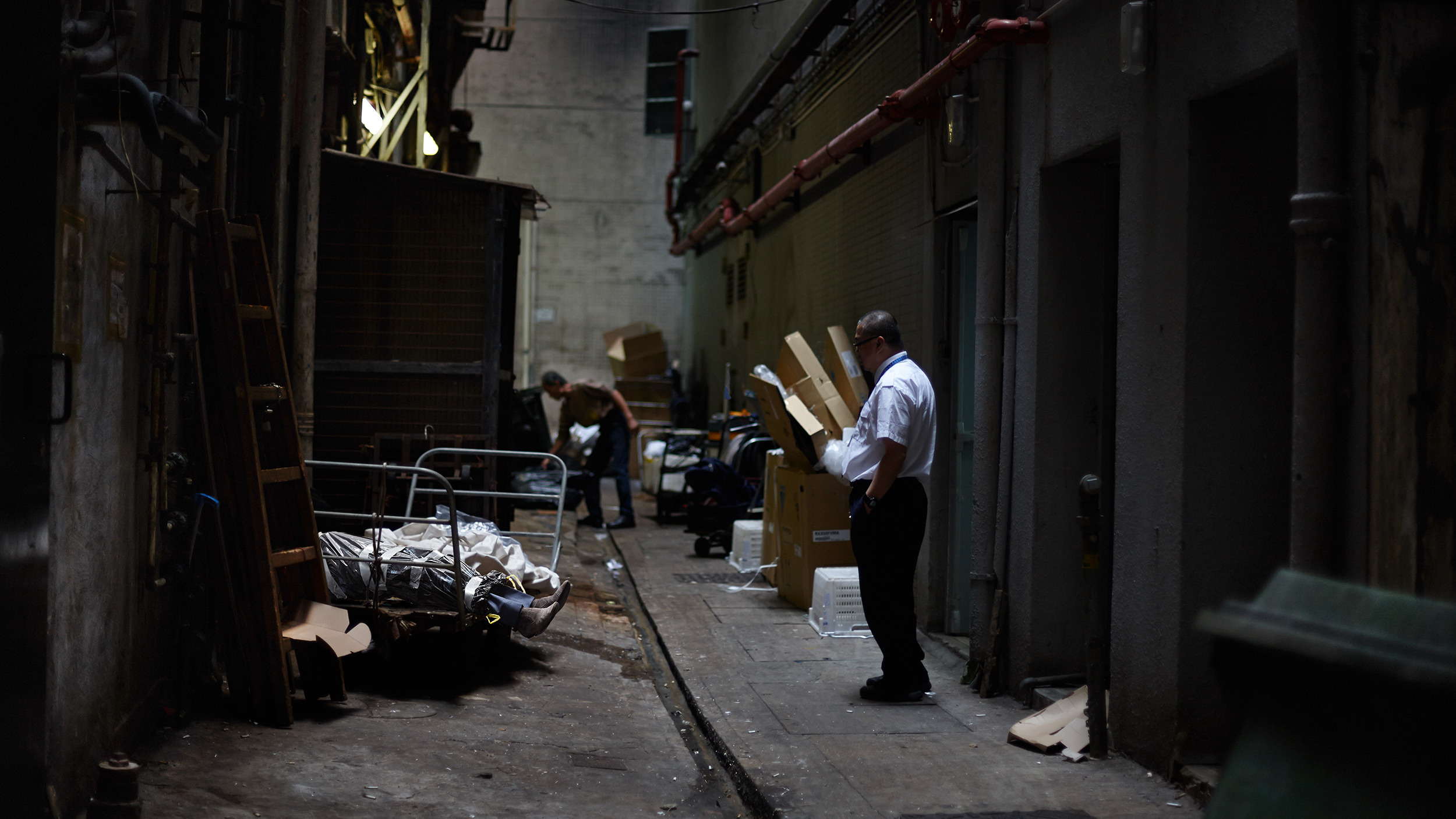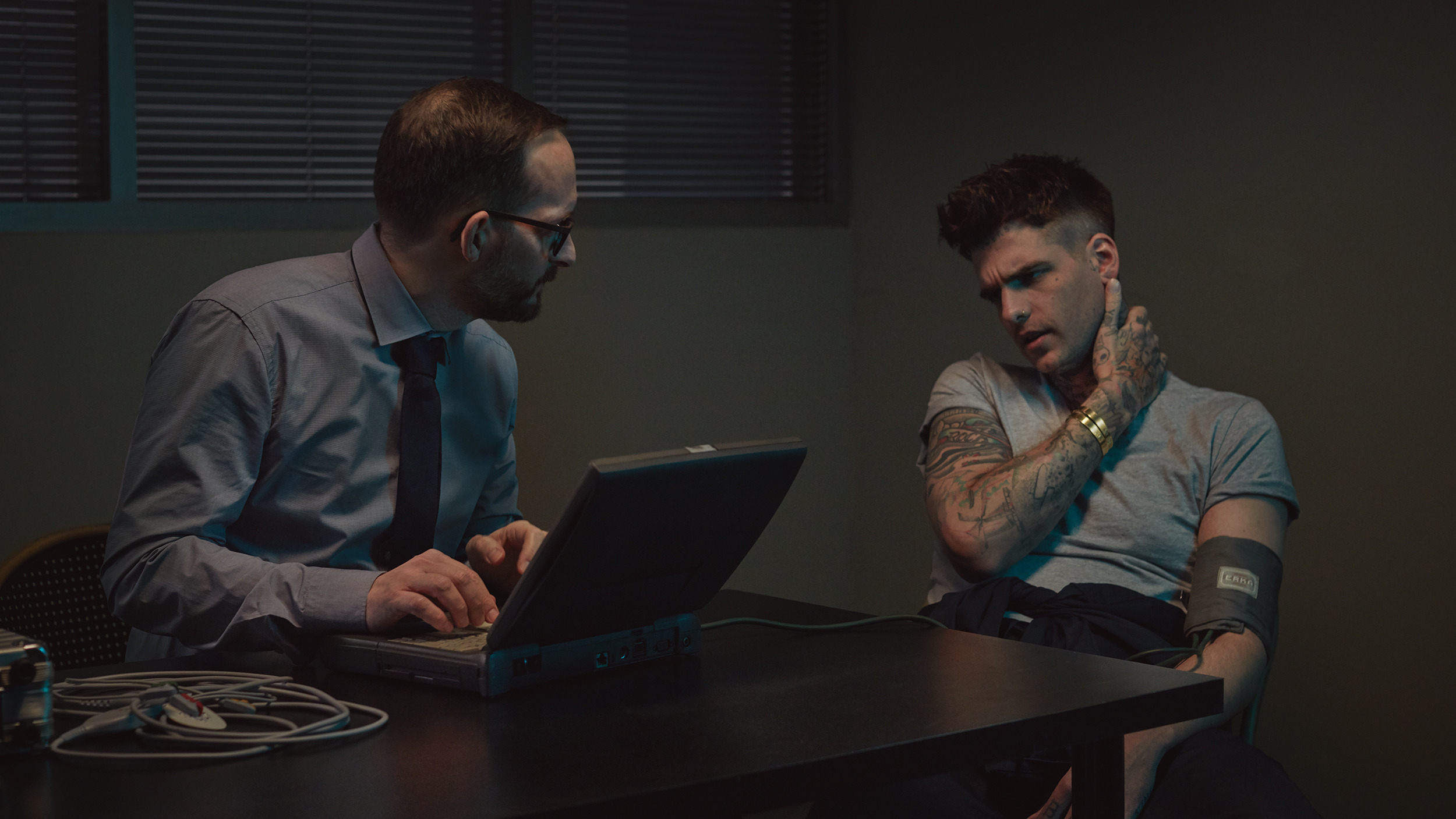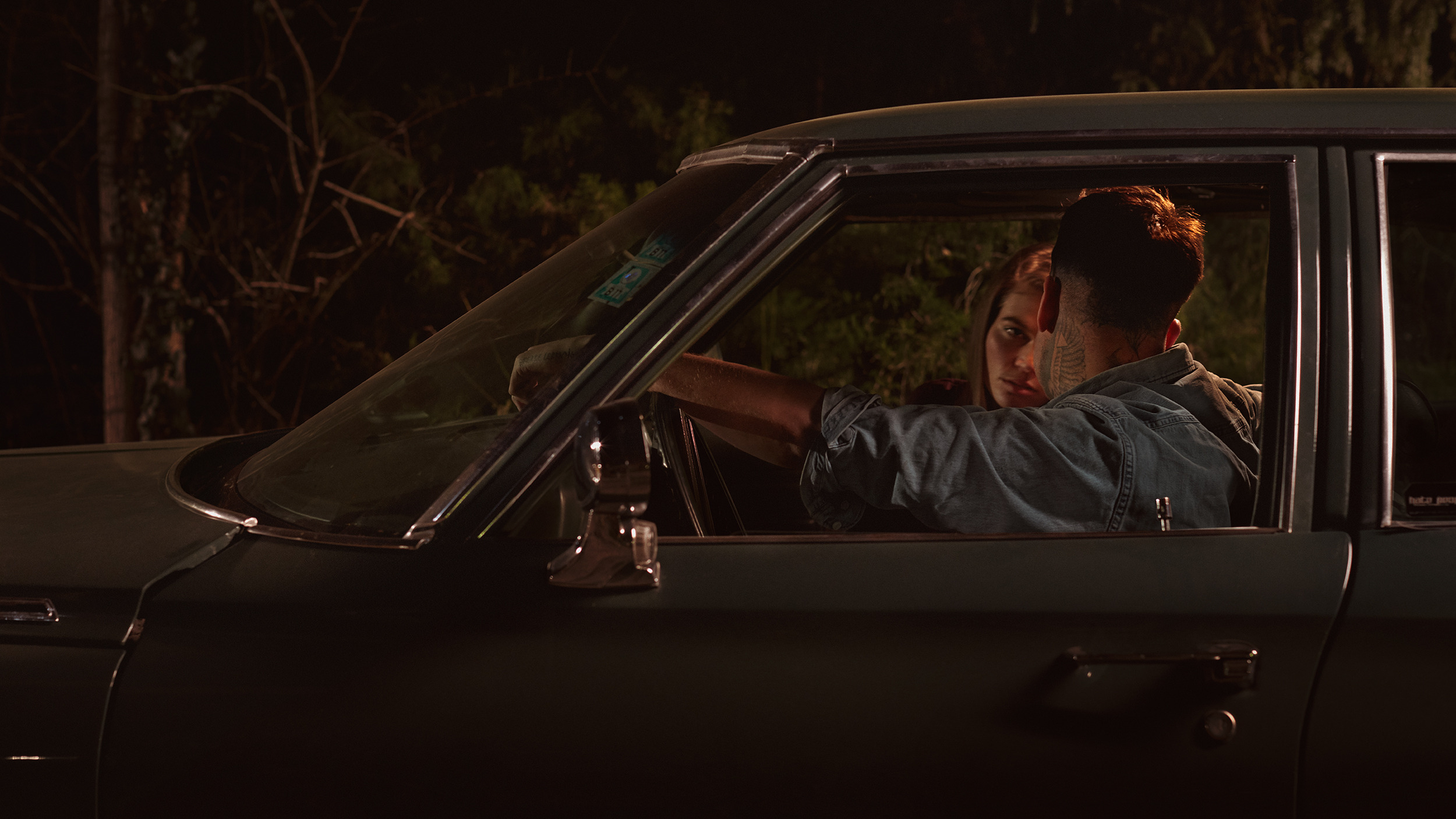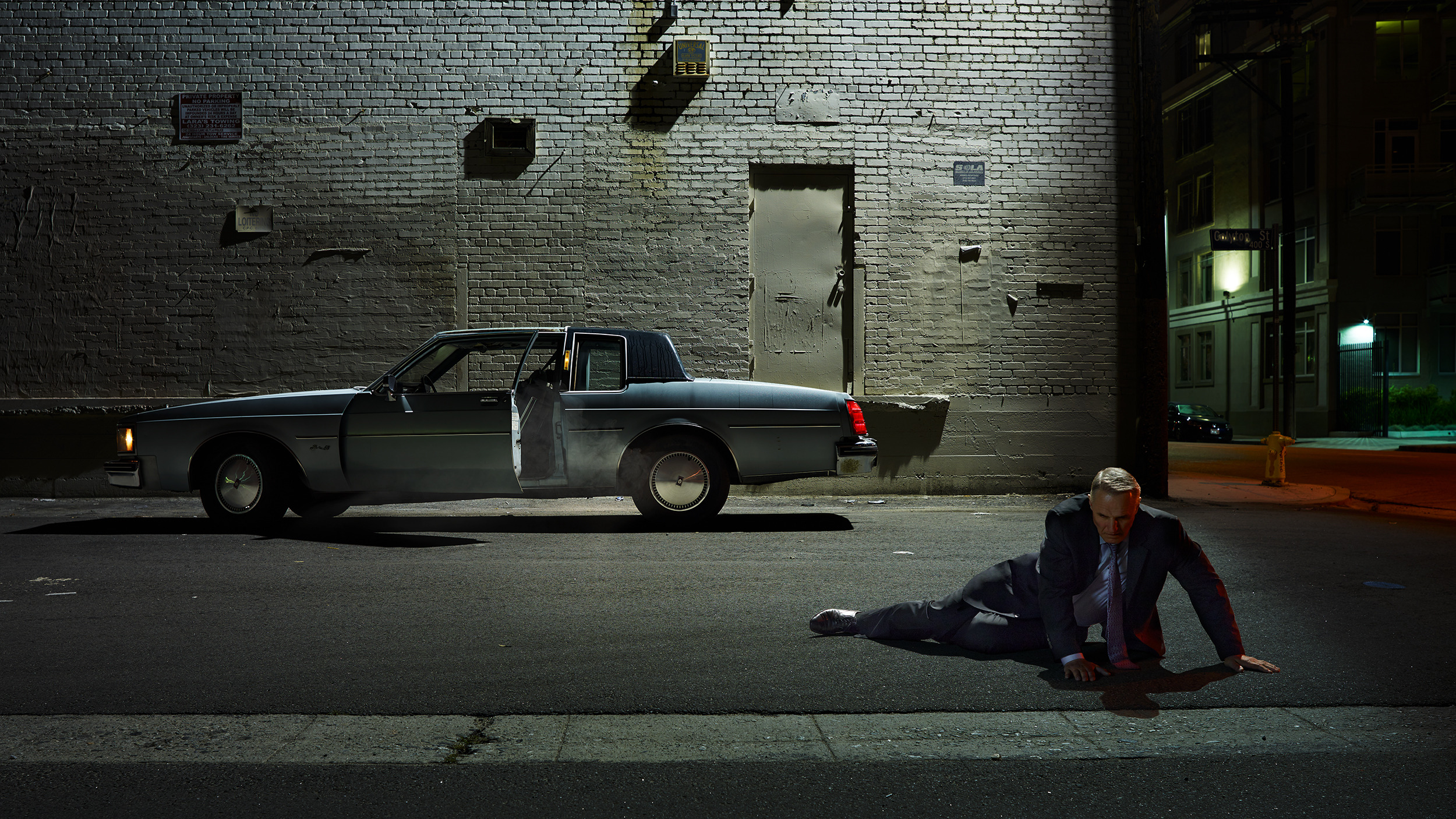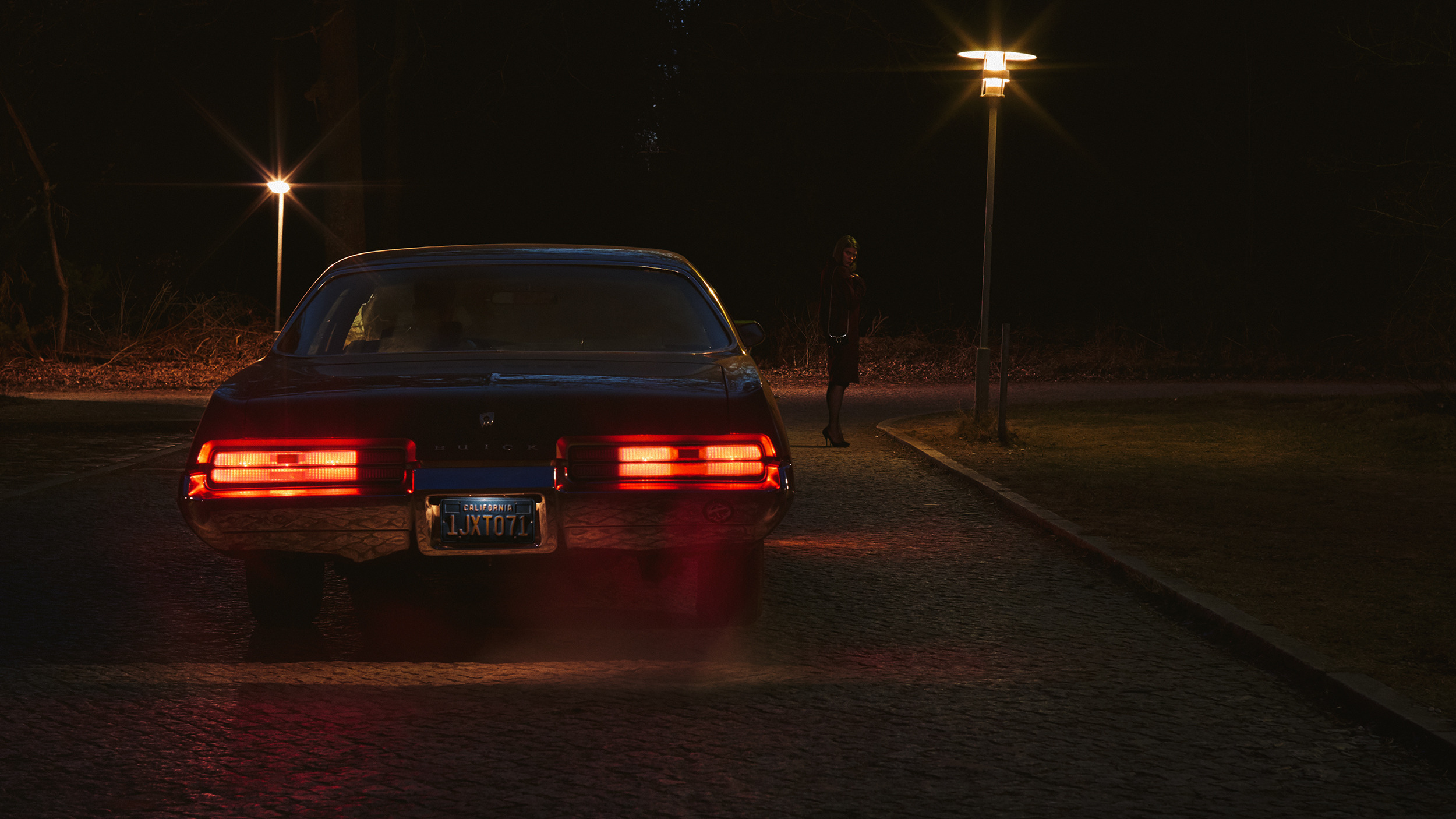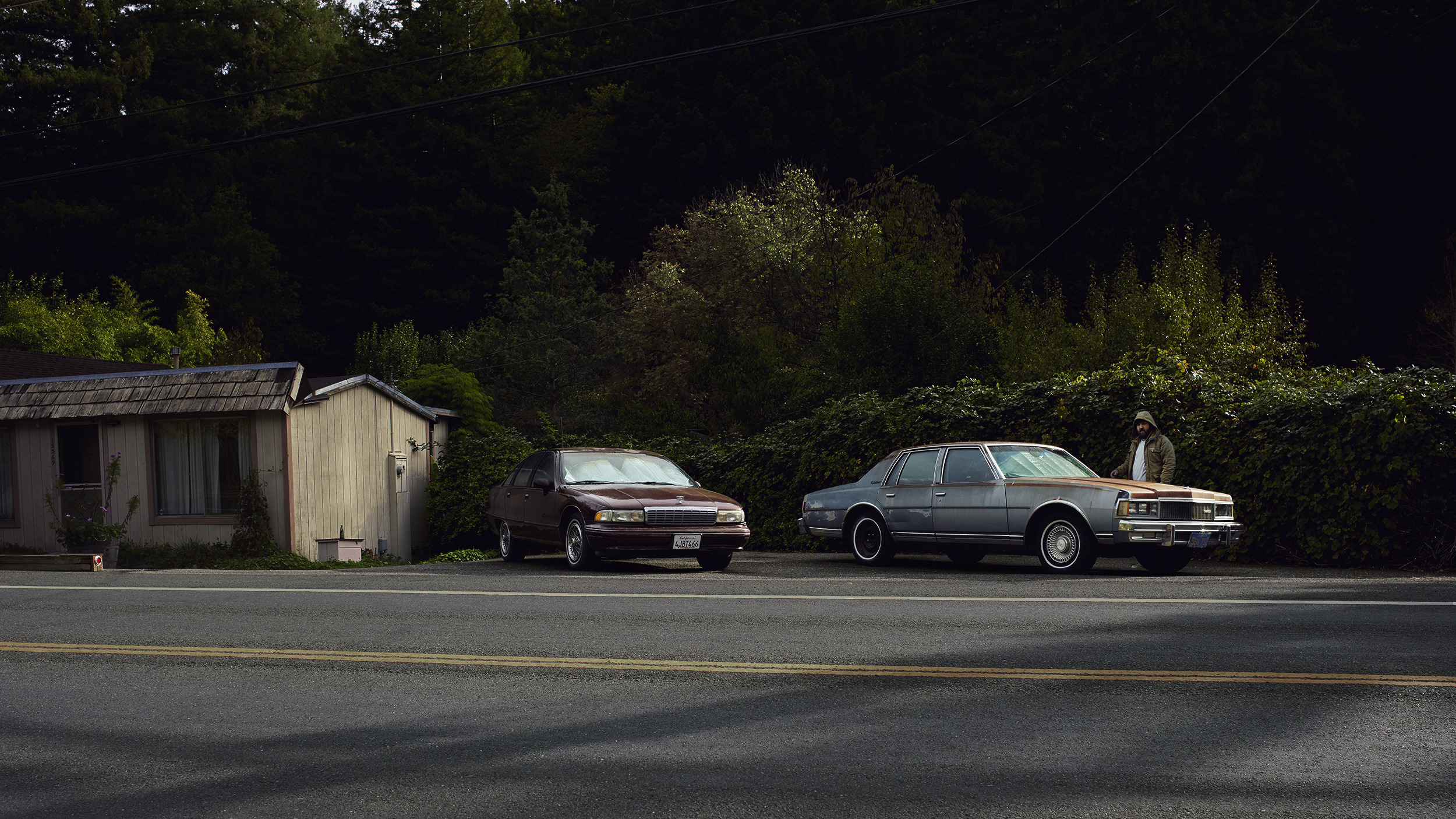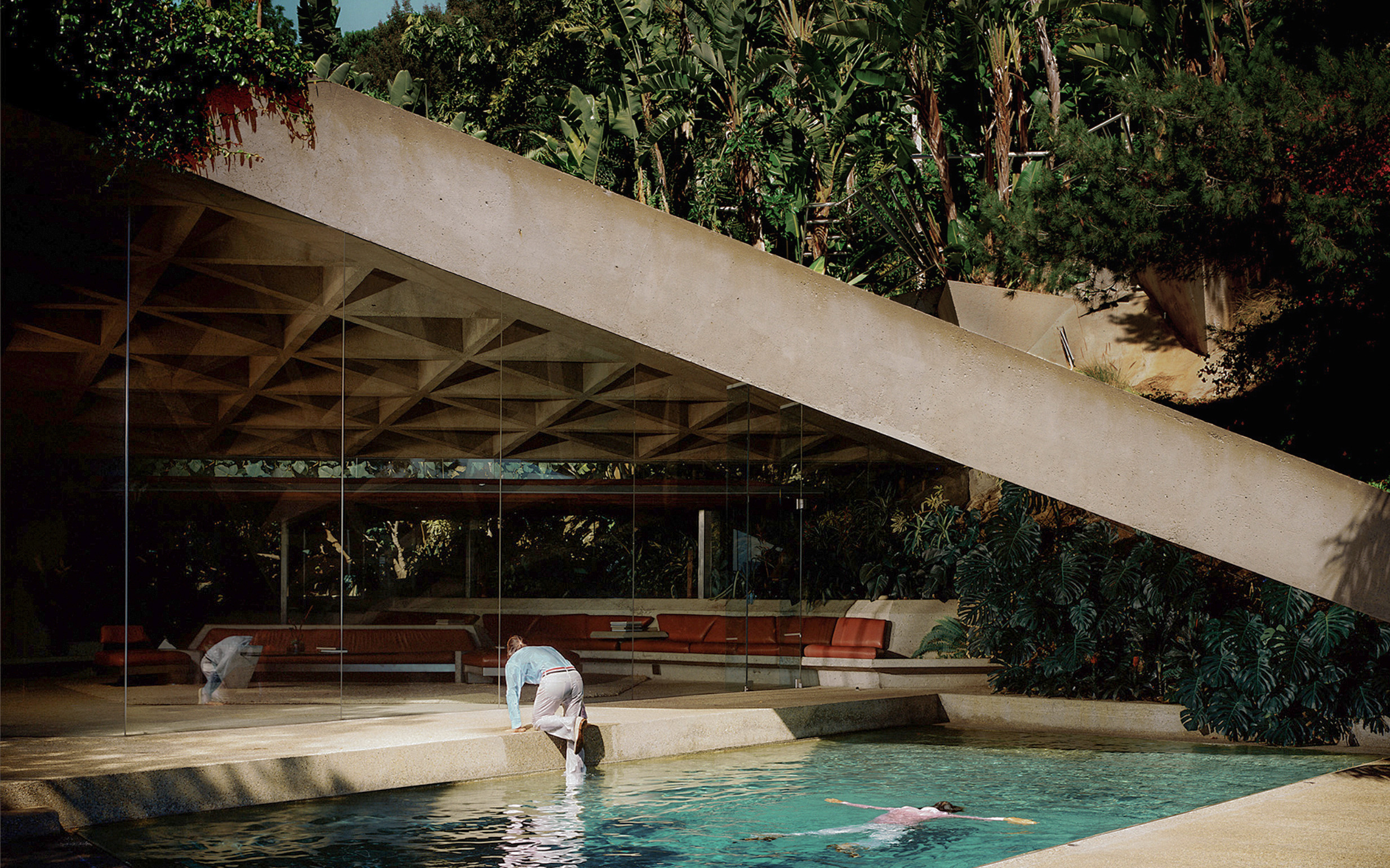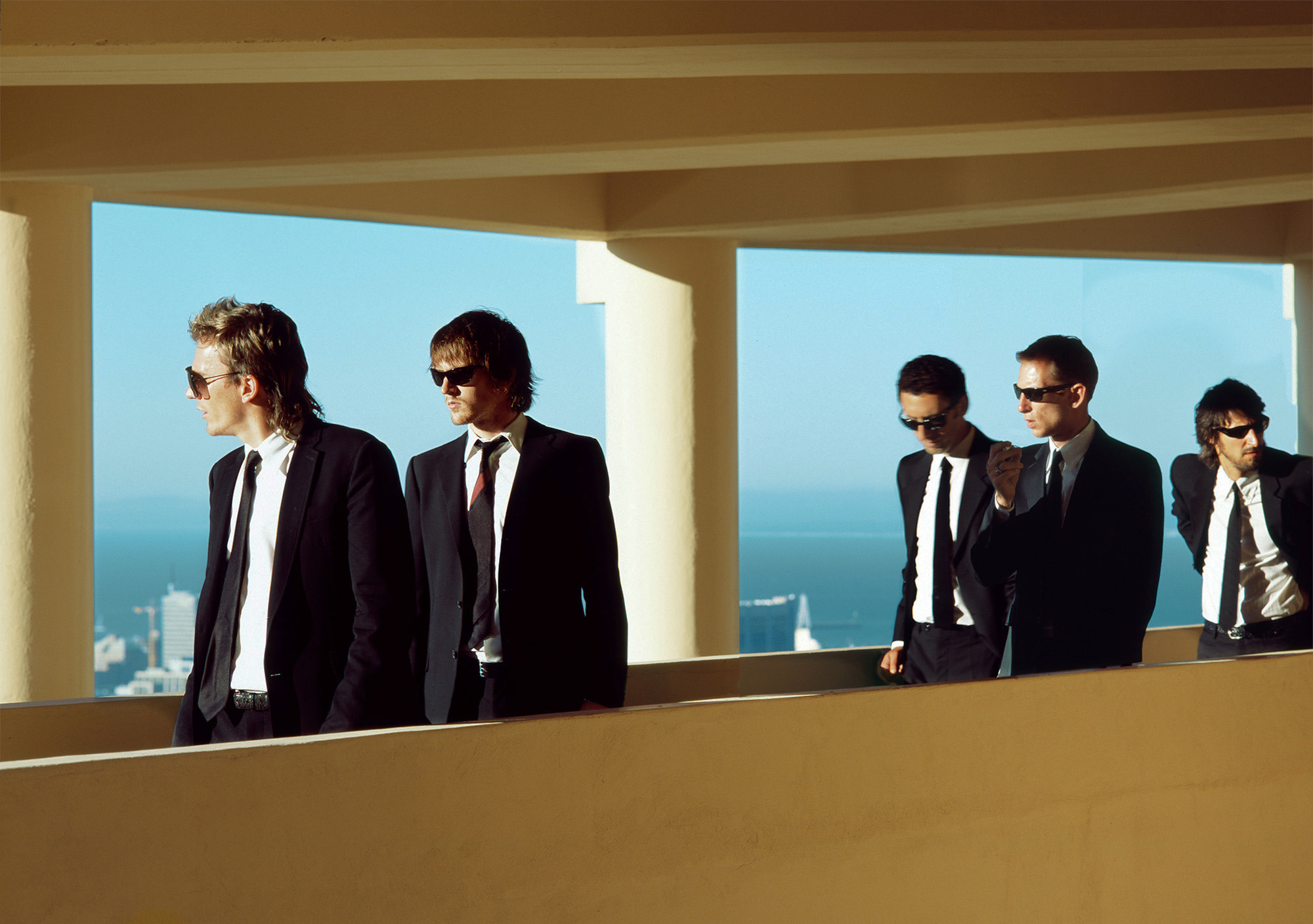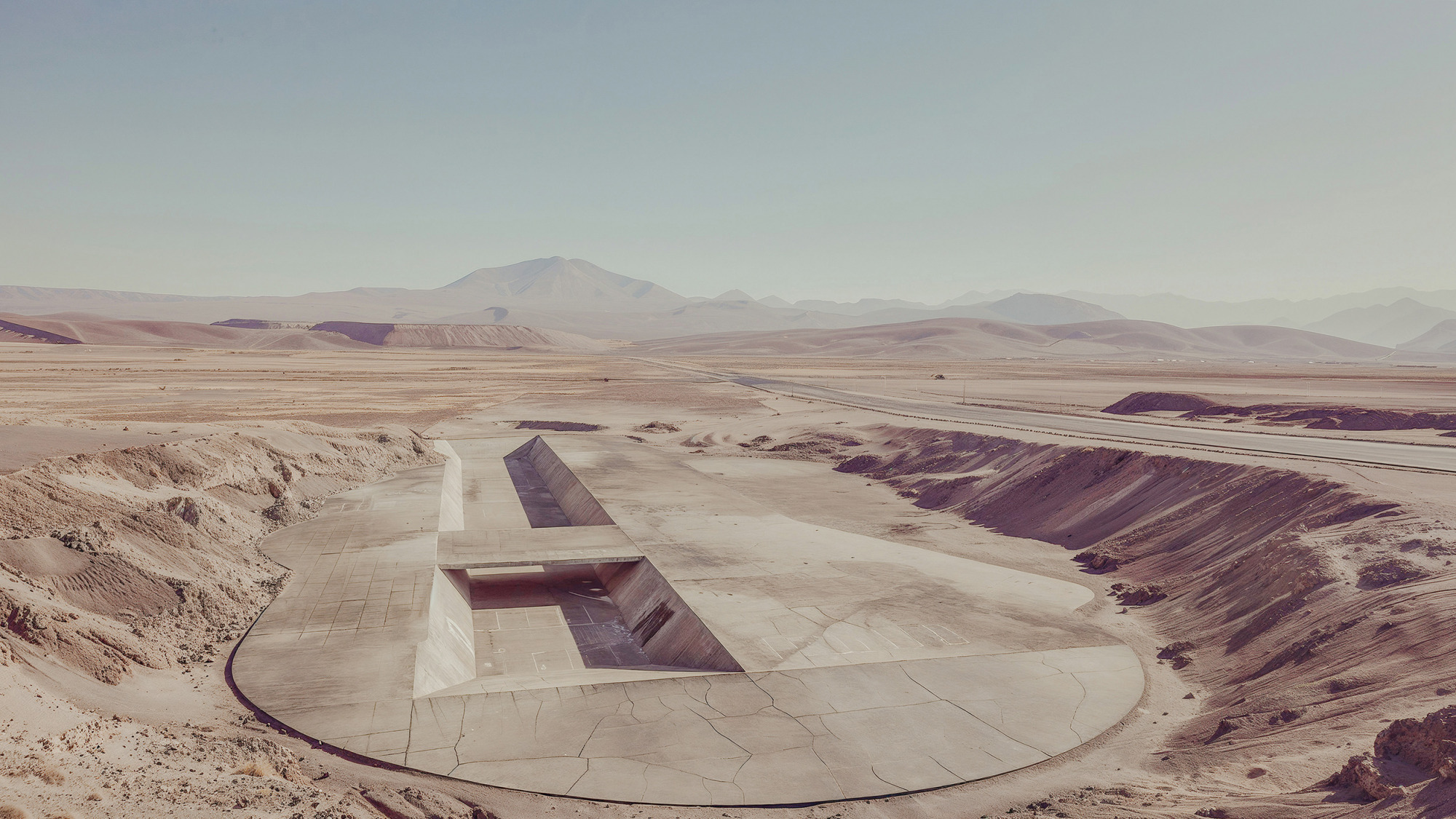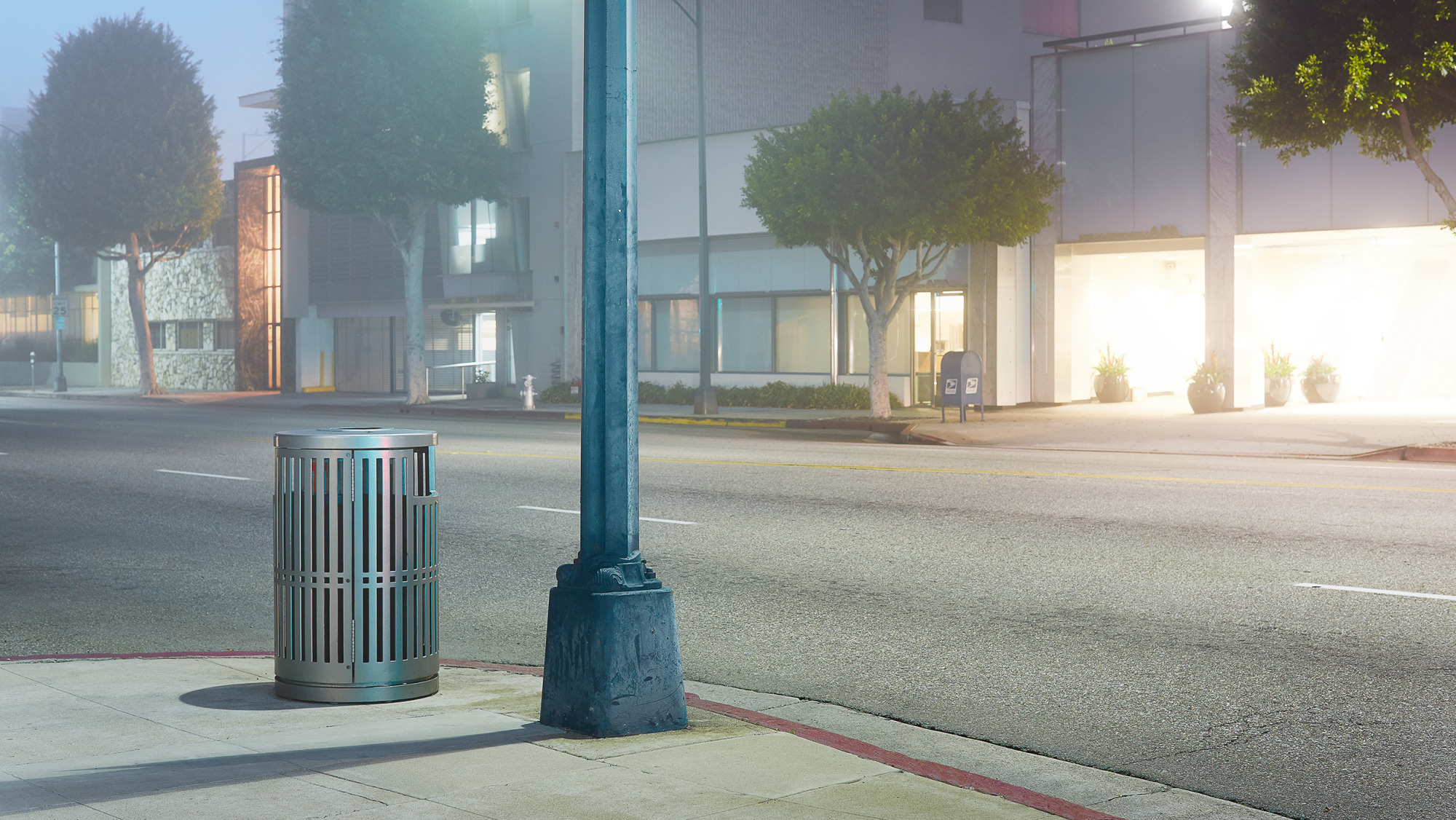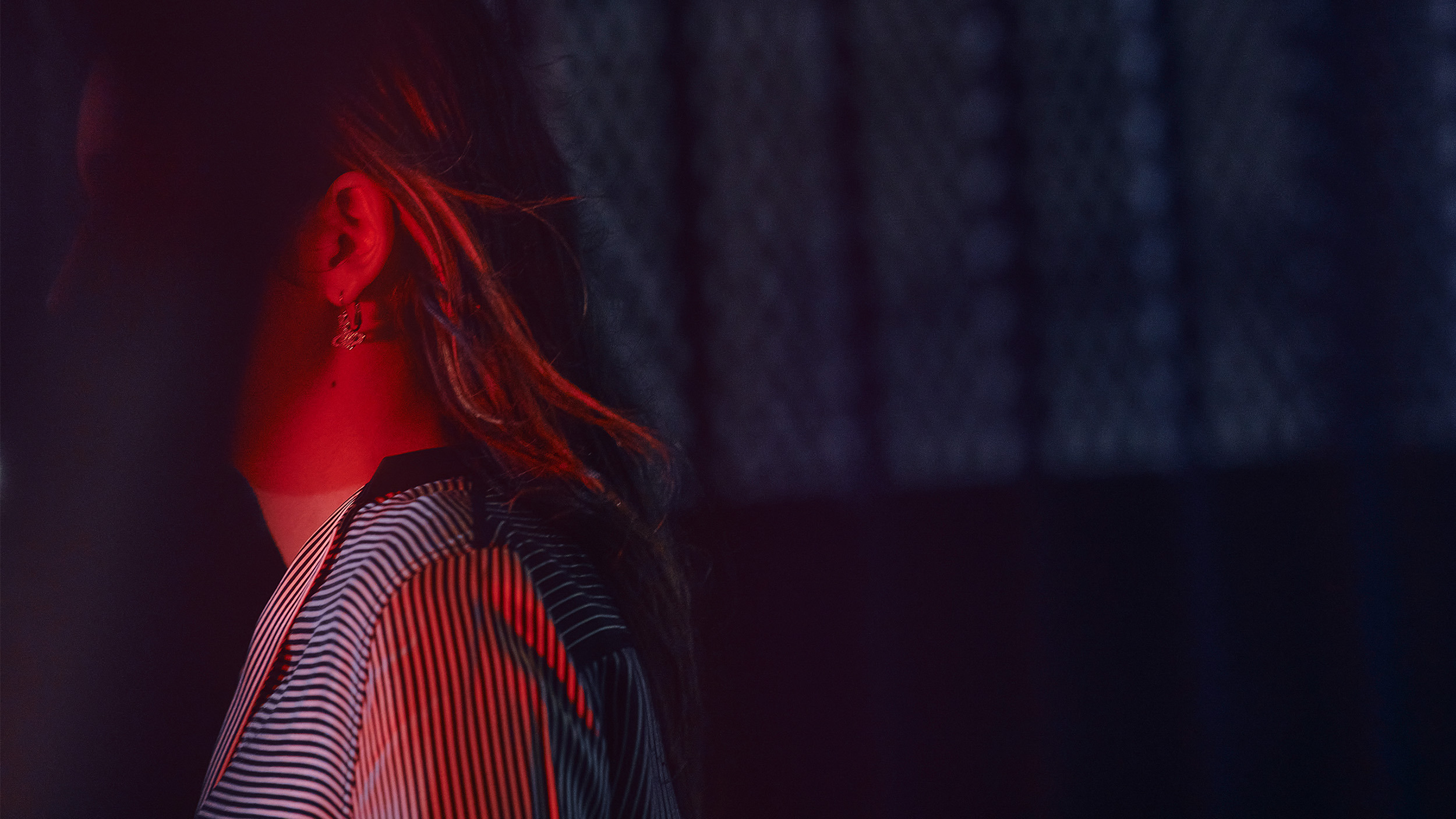
| Project: | Cinemascopes |
Cinemascopes is an ongoing photographic project that meticulously constructs fictional film stills, immersing viewers in a world shaped by the visual and psychological lexicon of film noir, crime, and thriller cinema. These images operate at the threshold between photography and cinema, invoking a sense of temporal dislocation—scenes extracted from narratives that remain just beyond reach. While some works subtly reflect the socio-political undercurrents of their time, others function as pure exercises in cinematic composition, where shadow and geometry dictate meaning.
Color grading plays a pivotal role in reinforcing the project’s atmospheric depth: muted monochromes recall the stark chiaroscuro of classic noir, while desaturated palettes evoke the gritty realism of 1970s crime films. In contrast, deep, cinematic hues—saturated reds, cold blues, or sickly yellows—instill psychological tension, heightening the viewer’s sense of unease or intrigue.
Beyond their formal composition, these images tap into the psychology of suspense and voyeurism. Figures appear caught in moments of hesitation, obscured by darkness or fragmented by reflections, evoking the paranoia and ambiguity of a world in which nothing is fully revealed. The tension between movement and stasis mirrors the way memory and narrative function—constructed, reconstructed, and ultimately, uncertain. Light, here, is not merely an aesthetic device but a psychological force, exposing and concealing in equal measure, leaving the viewer suspended between revelation and mystery.
Color grading plays a pivotal role in reinforcing the project’s atmospheric depth: muted monochromes recall the stark chiaroscuro of classic noir, while desaturated palettes evoke the gritty realism of 1970s crime films. In contrast, deep, cinematic hues—saturated reds, cold blues, or sickly yellows—instill psychological tension, heightening the viewer’s sense of unease or intrigue.
Beyond their formal composition, these images tap into the psychology of suspense and voyeurism. Figures appear caught in moments of hesitation, obscured by darkness or fragmented by reflections, evoking the paranoia and ambiguity of a world in which nothing is fully revealed. The tension between movement and stasis mirrors the way memory and narrative function—constructed, reconstructed, and ultimately, uncertain. Light, here, is not merely an aesthetic device but a psychological force, exposing and concealing in equal measure, leaving the viewer suspended between revelation and mystery.
